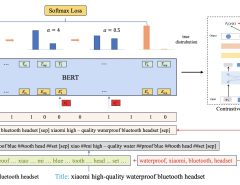SecureNetIQ
Elevator Pitch: Imagine a cybersecurity system that evolves with the threats, protecting your IoT network with the latest in AI technology. SecureNetIQ offers the next generation of intrusion detection, keeping your smart devices safe in a world of ever-growing connectivity and cyber threats.
Concept
An AI-driven Intrusion Detection System for IoT networks
Objective
To provide robust, real-time cybersecurity for IoT systems using advanced machine learning models.
Solution
Developing a software platform that integrates ensemble methods and deep learning techniques, particularly recurrent networks, to classify and mitigate potential attacks in IoT networks using the MQTT protocol.
Revenue Model
Subscription-based service for IoT device manufacturers, IoT network service providers, and end-users. Possible tiers based on usage, size of IoT network, and level of security.
Target Market
IoT device manufacturers, smart home systems, industrial IoT providers, healthcare IoT systems, and smart city infrastructure managers.
Expansion Plan
Initially target small to mid-sized enterprises and then scale to larger corporations and smart city projects. Potential future expansion into IoT standard development and cybersecurity consulting.
Potential Challenges
Keeping up with the rapidly evolving landscape of IoT threats, ensuring high accuracy and low false positives, and the need for seamless integration with a wide variety of devices and protocols.
Customer Problem
IoT systems are vulnerable to a variety of network attacks, and existing cybersecurity solutions may not be effective against the continuous and heterogeneous nature of IoT networks.
Regulatory and Ethical Issues
Compliance with global data protection laws, such as GDPR and CCPA, ensuring user privacy, and managing potential biases in AI algorithms.
Disruptiveness
SecureNetIQ’s AI-powered IDS could revolutionize IoT security by providing an adaptable, proactive, and autonomous defense system catering to the specific security needs of IoT networks.
Check out our related research summary: here.



Leave a Reply